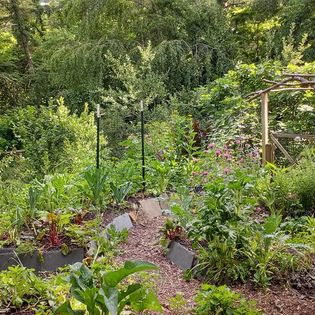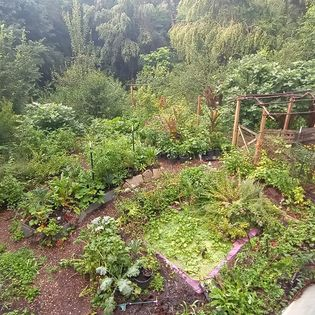Let’s take a short look back in time and work our way to the present, just to gain some perspective. 10,000 years ago, we began our transition from a nomadic way of life to a stationary, agricultural civilization. We learned to plow fields and grow grains. As with most things man does, some were better at this than others. Better climate, better soil, better irrigation techniques, better tools, better planning, all served to create a primitive hierarchy, and with it, a sense of ego and division within society.


Fast forward to around 3000 years ago and the use of coal, which ushered in the iron age. Coal provided a stable source for heat, light, and energy. It was reliable and easy to transport. This allowed civilization to populate further reaches of the globe. Famine and disease were still rampant, keeping population growth in check, but still, small gains were made. In the early nineteenth century, steam power through the use of coal ushered in mass transportation capabilities across oceans and continents.
Fast forward again to 1859 and the world’s first drilled oil well in Titusville, Pennsylvania. The use of oil ushered in a host of new technologies that further simplified and enhanced life. These advances brought us the automobile, airplanes, centralized home heating and air. It brought about the American industrial revolution and enabled leaps in industrial technologies across the globe. Modern industrial agricultural farms were made possible using large machinery, which also introduced chemical fertilizers, pesticides, and insecticides to improve yield. All made possible through fossil fuels. The world became smaller, leisure time was increased (in the industrialized world), and modern medicine enhanced survival and longevity. This allowed a population that had remained below 1 billion for 10,000 years to balloon to 7.3 billion by 2010.
Svante Arrhenius, a Swedish scientist, first explained the greenhouse gas theory in 1896. He posited that the burning of fossil fuel and releasing of carbon dioxide into the atmosphere had the potential to act as a blanket around the earth, trapping the heat of the sun’s energy within the earth’s atmosphere. Twenty years ago, Professor Michael E. Mann produced the hockey stick graph from data collected from ice and mud core samples taken around the globe. This data showed the planet had begun warming after a long slow cooling, caused beyond any reasonable doubt by man’s activities.
Around ten years ago we began seeing signs visible to the naked eye rather than requiring specialized tools and algorithms to make sense of the information. We also began to feel these signs in our wallets. Changing weather patterns, larger and more devastating storms, more frequent and longer periods of drought (check out Syria’s drought as a prime example) causing devastation, states of emergency, all costly in dollars, but more importantly, in lives.
A Walk on the Macro Side
On the Macro side, it follows the same concept, but on grander, societal, scale. Work to design a society that is symbiotic, mutually beneficial, and produces no waste; something resilient and magical. Return to a focus on community and less on unhealthy competition. Nurture diversity in people, as nature does with species.
The earth, in its 4.5 billion years, has evolved to find a comfortable, relatively stable, climate for all of man's’ history. This was accomplished through a process, which began way before we came along, called the carbon cycle. The symbiosis of plants breathing in CO2 and exhaling O2 while the animals breathe in O2 and exhale CO2. This symbiosis has found such balance and stability that for the last 10,000 years, we have seen less than a one degree celsius change in the earth’s temperature. As a result, flora and fauna have thrived.
Until now.
Our short-sighted, childlike insistence on the continued use of fossil fuels has thrown this delicate, but stable balance out of sync. For 10,000 years, nature has managed to maintain its balance despite the presence of man. Human activity worked in concert with nature, not against it. That is, until recently. The past 200 years, and mostly the last 60 years, has seen an incredible shift in nature’s balance. The use of fossil fuels continually rising has released millions of years of carbon that was stored deep within the earth's soil, now working against nature, once slowly, but now rapidly destroying what remains, this delicate balance gone.
We began altering the balance as we cleared the forest and planted the fields that were left behind. In the name of food, lumber, and energy, we destroyed as we settled our globe. We were naive to believe we could wipe out old growth forest with all their plants animals and fungi and the many functions they performed, along with their diverse roles in the ecosystem that had created our atmosphere, without consequence. We limited our ability to sequester excess CO2, all the while, designing a modern society that relied on the emission of even more CO2 using fossil fuels.
But we can and must change!! Moving forward and using nature as our guide, we can redesign society to be in sync with nature once again. We can once more be part of, rather than feeling bigger or better than, nature. This is permaculture! We must create food forests, rather than barren fields. We can create regenerative, rather than degenerative systems. In doing so, we will create many levels of food production, CO2 sequestering, oxygen supplying, water storing, soil creating, life giving, planted living systems, which work with nature rather than against her.
Rather than stubbornly insisting on the continued use of fossil fuels, rather than maintaining the harmful status quo, we must begin collecting and storing energy of many forms. We must learn to value and use renewable sources. We must learn to integrate rather than segregate. We must learn to use, reuse, and repurpose, producing no waste. We must learn that valuing diversity and using it to enhance nature and society is mutually beneficial and symbiotic to the whole.
These are just a few of what we call the permaculture principles, and that is the focus of this article. My purpose is not just to expose what is wrong and what needs to change. My purpose is not just to rail against governments and existing systems for detrimental practices and policies. My purpose is not to make my readers feel guilty for their lifestyle today. My purpose is to inform and educate. Sometimes it comes in the form of vehement opposition to the status quo. Sometimes it comes in the form of a klaxon. Regardless of form, the purpose is to encourage change, personal and societal, one reader at a time.
[I thank Sonya Johnson for her assistance with this article.]
By George Brabant
George E. Brabant grew up on the St. Lawrence River, in Clayton and on Grindstone Island, NY. Being immersed in nature from a young age, he experienced the four seasons and their rhythms. After living in Lake Placid, he moved to the Colorado Rocky Mountains, where he spent a decade and a half of skiing, kayaking, fishing, and hunting in the high Rockies. He then landed in Asheville NC, where he now lives with his fiancé Melinda and makes his living as a remodel contractor. His family says that George discovered Permaculture after losing his brother Keith, and reading the works that Keith had left behind, which led him to question our way of living and how sustainable it is – or isn’t.
Permaculture uses nature as a guideline. The edge of the forest turns full and green every year with no help from man; it happens from a symbiotic relationship between plants, animals, and fungi. Over the last 10 years, George has incorporated this philosophy into his existing love of nature, and turned their ½ acre property into a permaculture food forest. He started by adding chickens and ducks, removed all grass, and installed swales, ponds, and fruit trees. A year in, he connected with like-minded individuals in the local permaculture community, took a Permaculture Design Course, and became a certified instructor. He now gives classes, including on-site tours of their permaculture food forest, Phat Ninja Farm, and invites other permaculture instructors and their classes to tour the property as well. George shares videos of the Phat Ninja Farm progression, and how to convert any property to a sustainable food forest using permaculture principals at: https://www.youtube.com/watch?v=su4cyK_hlcY.
Posted in: Volume 16, Issue 8, August 2021, Nature, Essay
Please click here if you are unable to post your comment.
